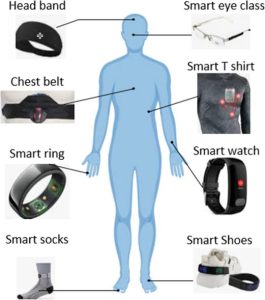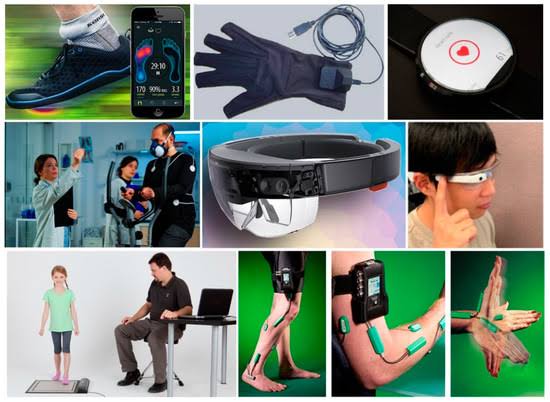As I strapped on the Wellness Watchman, I felt a surge of hope. This sleek, cutting-edge wearable was my new guardian, my sentinel against the silent threats of stress and fatigue. Its advanced sensors would monitor my vital signs, tracking every beat, every breath, every move. I felt a sense of security, knowing that this tiny device would alert me to any potential dangers, empowering me to take control of my health.
But as the days passed, the Wellness Watchman revealed its true power. It wasn’t just a passive monitor – it was a proactive coach, nudging me towards better habits, encouraging me to move more, to breathe deeper, to sleep sounder. Its gentle vibrations and subtle cues became a constant reminder that I was capable of more, that I was stronger than I thought. And as the numbers on its screen began to trend upwards – my heart rate slowing, my steps increasing – I felt a sense of pride, of accomplishment, of hope.
Now, I can’t imagine living without my Wellness Watchman. It’s more than just a device – it’s a promise, a reminder that I have the power to shape my own destiny. With every beat, every breath, every step, I’m writing a new chapter in my story, a story of resilience, of strength, of wellness. The Wellness Watchman is more than just a wearable – it’s a symbol of hope, a beacon of inspiration, a reminder that a healthier, happier me is just a step away. And with that knowledge, I’m ready to take on the world, one heartbeat at a time.
What is Health Wearables?

Health wearables, also known as wearable health devices or fitness trackers, are small electronic devices designed to be worn on the body to monitor and track various aspects of a person’s health and fitness. They are typically worn on the wrist, like a smartwatch, or as a clip-on device.
Health wearables can track various health metrics, such as:
1. Heart rate and rhythm
2. Blood pressure
3. Blood oxygen levels
4. Sleep quality and duration
5. Steps taken and distance traveled
6. Calories burned
7. Exercise intensity and type
8. GPS location and route tracking
9. Body temperature
10. Electrocardiogram (ECG) readings
Some health wearables also offer additional features, such as:
1. Notifications and alerts for important health events
2. Reminders to move or exercise
3. Stress tracking and relaxation exercises
4. Menstrual cycle tracking
5. Fall detection and emergency alerts
6. Integration with other health devices, such as blood glucose monitors or inhalers
7. AI-powered insights and personalized recommendations for improvement
Health wearables aim to empower individuals to take a more proactive approach to their health and wellness by providing valuable insights and data to make informed decisions.
Types
1. Smartwatches: Like Apple Watch or Wear OS devices, offering a range of health features.
2. Fitness trackers: Dedicated devices like Fitbit or Garmin, focusing on exercise and activity tracking.
3. Smart bands: Basic wearable devices that track minimal health metrics, like steps and sleep.
4. Smart clothing: Clothes with integrated sensors, like smart socks or shirts, tracking various health metrics.
5. Hearables: Wireless earbuds with health features, like heart rate monitoring or fall detection.
6. Smart glasses: Augmented reality glasses with health tracking capabilities.
7. Wearable sensors: Small devices attached to clothing or the body, tracking specific health metrics.
8. Health monitors: Devices dedicated to monitoring specific health conditions, like blood glucose or blood pressure.
9. Sleep trackers: Wearable devices focused on sleep quality and duration tracking.
10. Smart jewelry: Wearable devices disguised as jewelry, tracking health metrics like heart rate or activity.
These types of health wearables cater to various needs and preferences, offering a range of features and functionalities to support overall health and wellness.
Functions
1. Heart rate monitoring
2. Activity tracking (steps, distance, calories burned)
3. Sleep tracking (duration, quality, stages)
4. GPS tracking (location, route, distance)
5. Blood oxygen level monitoring
6. Blood pressure monitoring
7. Electrocardiogram (ECG) readings
8. Fall detection and alerts
9. Reminders and notifications (exercise, medication, appointments)
10. Stress tracking and relaxation exercises
11. Menstrual cycle tracking
12. Calories burned tracking
13. Exercise intensity monitoring
14. Sedentary behavior tracking
15. Posture monitoring
16. Respiratory rate monitoring
17. Body temperature monitoring
18. Hydration tracking
19. UV exposure tracking
20. Meditation and mindfulness tracking
These functions enable health wearables to:
– Monitor vital signs and health metrics
– Track physical activity and exercise
– Support sleep and stress management
– Provide personalized insights and recommendations
– Enhance overall health and wellness
Note: The specific functions may vary depending on the device and brand.
Maintenance
1. Cleanliness:
– Wash your hands before handling the device.
– Clean the device regularly with a soft cloth and mild soap.
– Avoid harsh chemicals or abrasive materials.
2. Software updates:
– Regularly check for firmware updates.
– Install updates to ensure new features and bug fixes.
3. Battery care:
– Charge the device according to the manufacturer’s instructions.
– Avoid overcharging or undercharging.
– Replace batteries as recommended.
4. Sensor calibration:
– Follow the manufacturer’s guidelines for calibrating sensors.
– Ensure accurate tracking by calibrating sensors regularly.
5. Strap maintenance:
– Clean the strap regularly.
– Replace the strap as recommended or when worn out.
6. Water resistance:
– Check the device’s water resistance rating.
– Avoid exposing the device to water beyond its rated depth.
7. Storage:
– Store the device in a cool, dry place.
– Avoid extreme temperatures or humidity.
8. Repair and replacement:
– Contact the manufacturer or a authorized service center for repairs.
– Replace the device if it’s no longer functional or outdated.
By following these maintenance tips, you’ll ensure your health wearable continues to provide accurate tracking and remains in good condition.
Here are some disadvantages of health wearables:
1. Accuracy concerns: Data may not always be accurate or reliable.
2. Privacy worries: Personal health data may be vulnerable to breaches or misuse.
3. Cost: Many health wearables are expensive, especially high-end models.
4. Limited functionality: Some devices may only track a few health metrics.
5. Dependence on technology: Over-reliance on wearables may lead to decreased self-awareness.
6. Cybersecurity risks: Connected devices may be vulnerable to hacking.
7. Battery life: Devices may require frequent charging, which can be inconvenient.
8. Comfort and design: Some wearables may be uncomfortable or unattractive.
9. Data overload: Too much data may be overwhelming or difficult to interpret.
10. Limited medical validation: Some wearables may not be validated by medical professionals.
11. False sense of security: Wearables may provide a false sense of security, leading to complacency.
12. Comparison and competition: Wearables may foster unhealthy competition or comparison.
13. Maintenance and updates: Devices may require frequent software updates and maintenance.
14. Limited compatibility: Some wearables may not be compatible with all devices or platforms.
15. Environmental impact: Wearables may contribute to electronic waste and environmental pollution.
It’s important to weigh these disadvantages against the benefits of health wearables and consider individual needs and preferences when deciding whether to use a wearable device.

